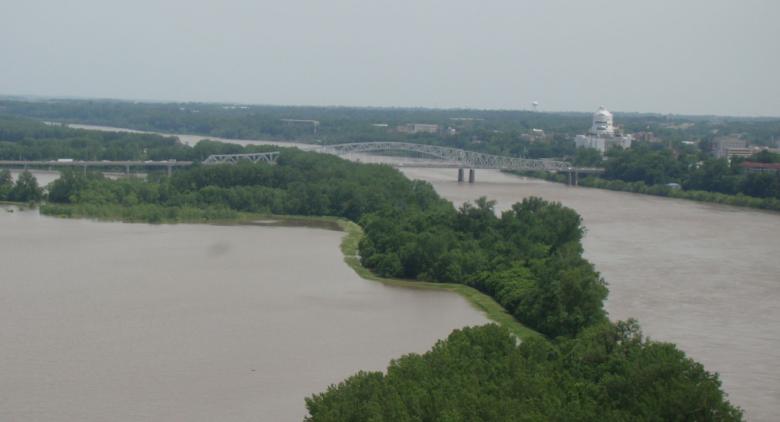
The Lower Missouri River experienced three devastating floods within 30 years: 1993, 2011 and 2019. Over the past decade the Lower Missouri River Basin has experienced unprecedented periods of flooding and recorded its first, second and fourth highest runoff years. The 2019 flood caused billions of dollars in damages to agriculture and infrastructure for communities in Iowa, Nebraska, Kansas and Missouri. Repair costs to levee infrastructure in the lower river was approximately $1.2 billion.
During the 2019 flood, Missouri, Kansas, Iowa and Nebraska formed a four-state coalition called the Flood Recovery Advisory Working Group. The states entered into a Memorandum of Agreement to cooperatively explore innovative solutions to improve flood protection. The goal was to develop actions to improve flood recovery and future flood control in the Lower Missouri River Basin and improve coordination and cooperation between the states and the U.S. Army Corps of Engineers.
Progress
As part of this effort, the group coordinated in 2020 and 2021 to conduct the Lower Missouri River Flood Risk and Resiliency Study, or System Plan. This plan will create a roadmap for the broader Lower Missouri River, from Sioux City, Iowa to St. Louis, Missouri. There are also three studies currently underway in Missouri investigating flood control systems along the Missouri River in Holt County, Brunswick and Jefferson City. These "spin-off" studies are in priority flood risk areas and provide a more in-depth look at the areas to formulate local, problem-specific solutions to address flood risks. By starting the feasibility study before completing the system plan, project areas with approved feasibility reports can seamlessly progress into the design phase. More project areas may be included as the system plan progresses. More information on all of these studies is available below.
In support of this historic effort, USACE is conducting updates to the Flow and Stage Frequencies on the lower river. The flow frequency analysis calculates the annual probability that a flow will be met or exceeded at a specific location. This data provides accurate tools for directing future study, action and planning for flood risk management in the Lower Missouri River Basin. The Flow Frequency Report was finalized in October 2023 and the Stage Frequency analysis has begun. Stage frequency analysis and reviews will take approximately two years. For more information, or to review the report, please visit the USACE's Flow and Stage Frequency Analysis webpage.
We Want to Hear from You
The flood protection methods of the Missouri River studies are being considered as part of a community-based approach. It is essential that residents in the study areas communicate their questions and concerns. Please send any comments, questions or other feedback to mowaters@dnr.mo.gov. If you would like to be added to our email notification list, please use the the green "Get Updates on this Issue" button.

